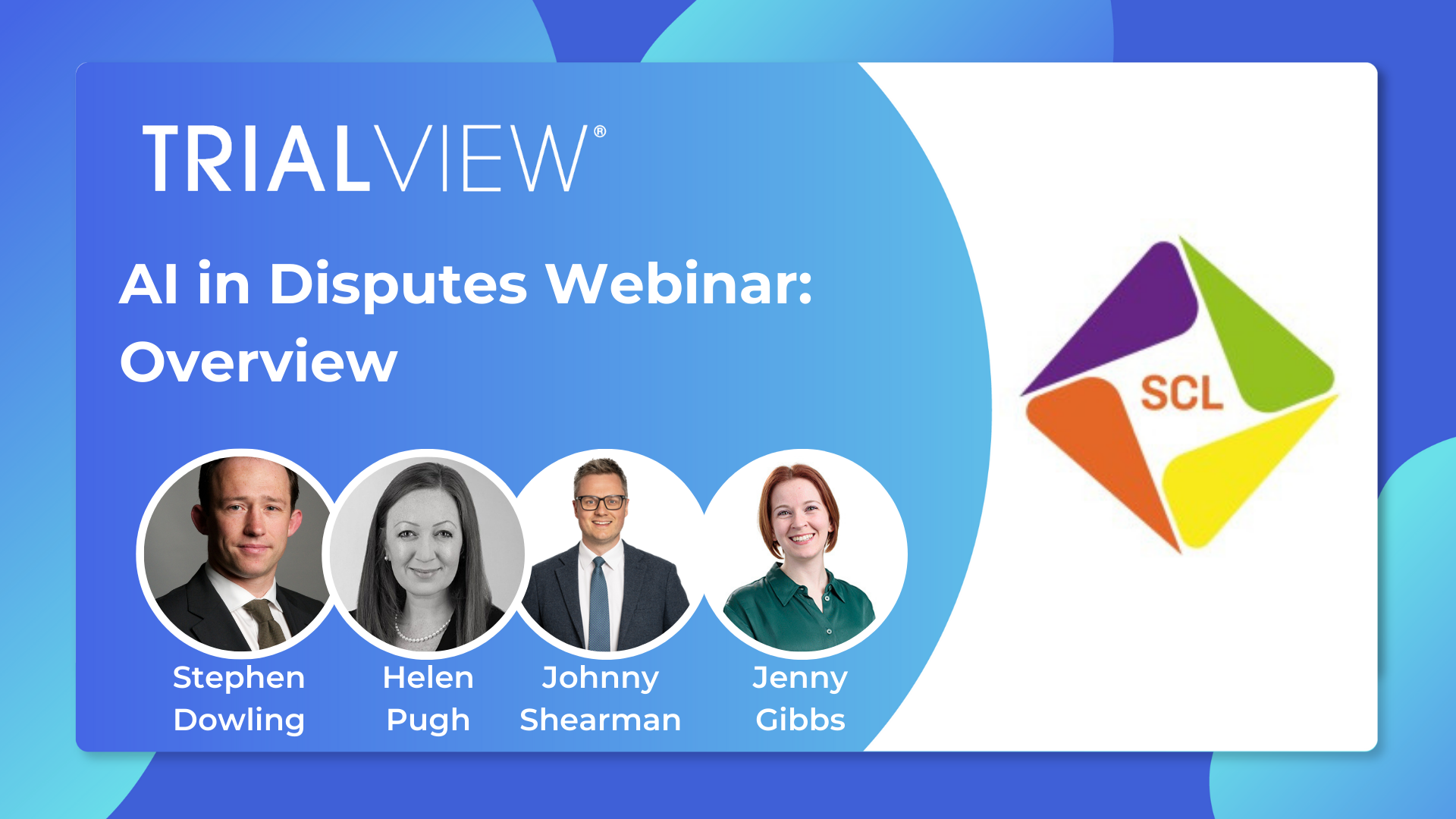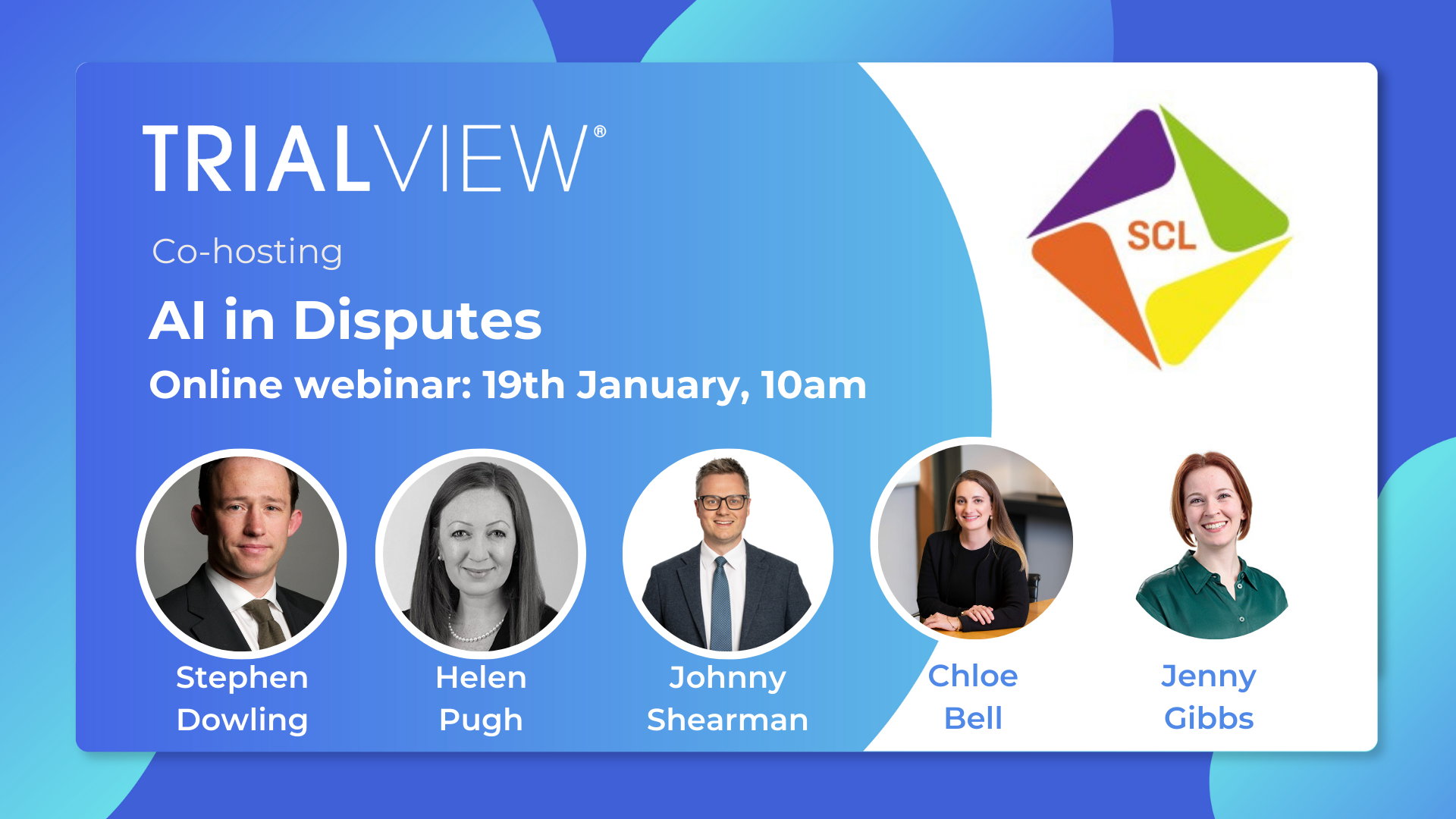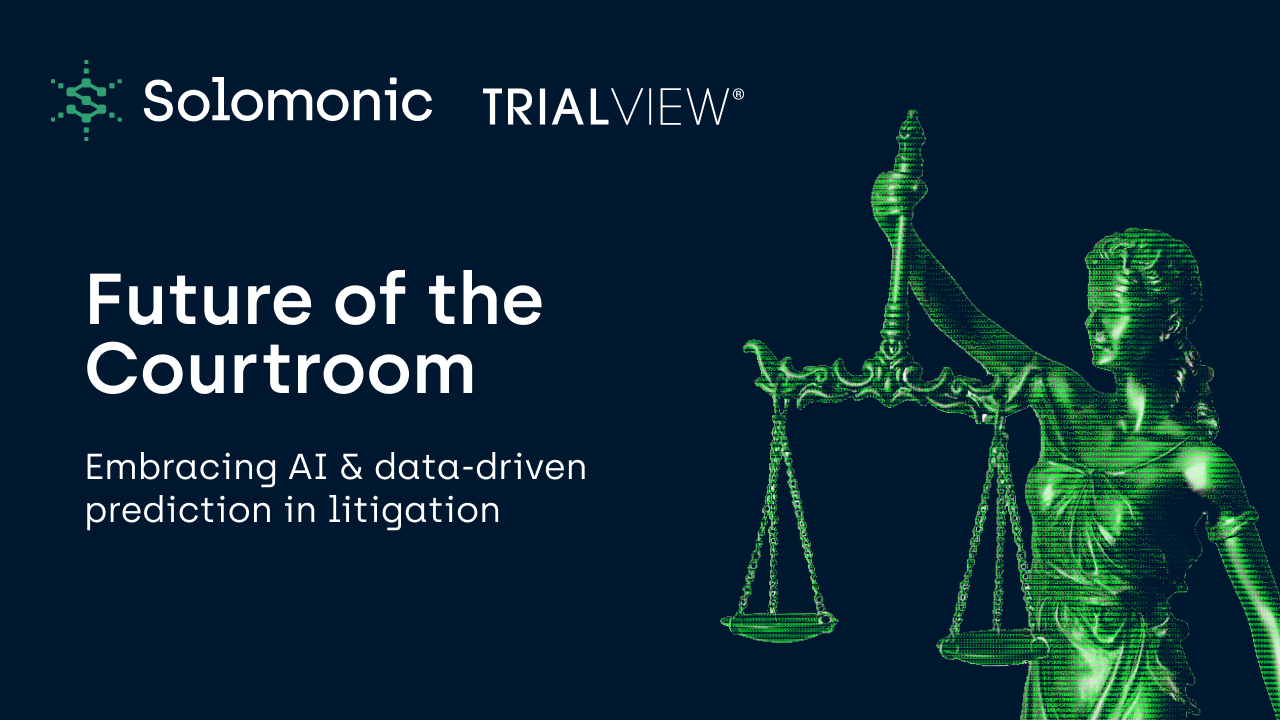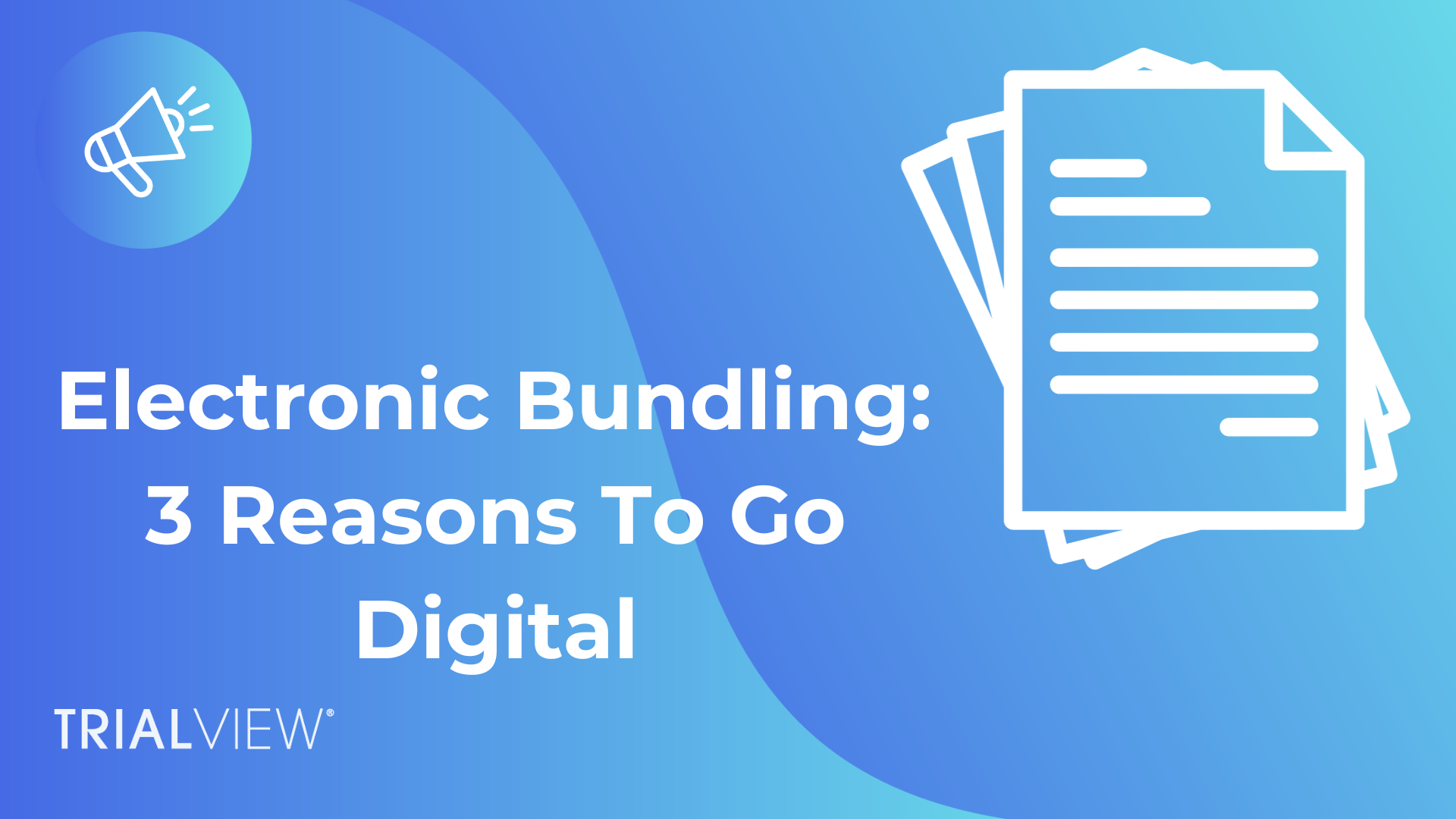On 19th January, we teamed up with the Society for Computers in Law (SCL) to delve deeper into the reality of AI in a Disputes setting.
Chaired by Eimear McCann from TrialView, our expert panel included Johnny Shearman, Practice Group Attorney at Greenberg Traurig; Helen Pugh, Barrister at Outer Temple Chambers; Jenny Gibbs, Associate, Womble Bond Dickinson (UK) LLP; and Stephen Dowling, Senior Counsel and Director, TrialView.
As we transition from AI hype to practical usage, we are keenly aware of the importance of using the correct tools in the appropriate context, but how do we get there, and what can we learn from existing AI tools? We explored these topical questions, whilst also pondering whether any potential disadvantages arise for certain segments of the profession, and briefly looking at the nexus between AI-driven processes and new economic models.
AI use cases and practical considerations
Opening the session with thoughts on a shift in thinking within the disputes world, a noticeable change was attributed to the explosion of generative AI, complementing the longstanding use of established AI tools in the eDiscovery space. The potential of generative AI, exemplified by Open AI’s Chat GPT, was underscored for its ability to unlock massive datasets, and facilitate natural language interactions. Anticipating a surge in generative AI applications for dispute resolution in 2024, the emphasis was placed on prioritising results and validation over the process itself. The legal community’s increasing interest in generative AI, particularly for first-layer legal research and summarising case material in legal documents, was highlighted.
Insights were shared on the practical applications of AI within the legal field. There was agreement on the importance of lawyers verifying the source of information relied upon by AI, emphasising that AI’s effectiveness is contingent on the quality of source data.
The panellists then delved into the practicalities and decision-making behind choosing relevant AI tools, and aligning these with relevant use cases, ensuring optimal uptake for law firms. Predictions included the evolution of litigation-specific tools used by lawyers, such as Practical Law with AI-assisted search functions. Expectations also encompassed changes in court procedures, with judges potentially using AI for drafting judgments; and the gradual introduction of AI in case administration and mediation. The ongoing need for lawyers to verify information sourced by AI tools was emphasised, with consensus of the potential of these tools in redefining professional negligence cases. For example, if an error was made which could have been spotted if a document had been run through an AI platform, then is a lawyer negligent for not making the check? How is that different from a lawyer not checking a tool, like Westlaw, to see if a case remains good law?
Johnny Shearman gave his thoughts on the balance of AI and human in this context, “Insurance is what makes the world go round. AI is a tool to be deployed but I can’t see a time in the near future when a lawyer won’t need to verify the source of information relied upon by the AI. AI is only as good as the source data. For example, ChatGPT’s training data only went up to September 2021 and the last update brought it up to January 2022.”
The AI education gap
The perception of AI among practitioners and the need for education on its capabilities were debated, particularly in the context of potential resistance from certain pockets of the profession, and the disruption AI could bring to tasks performed by junior lawyers. The disparity of engagement between law firm and chambers, for example, was highlighted, with the consensus that the dyanamics of the relationship between lawyer and counsel may change. Recommendations included referencing comprehensive guidance, such as that provided by the Law Society, to navigate the best use of AI tools.
Taking a holistic view, Helen Pugh expressed concern about the future of the profession, “I think it is inevitable that AI is going to disrupt the way junior lawyers go about their tasks. Lawyers often work in a team hierarchy. Paralegal, junior solicitor, partner, pupil, barrister. Take an example of a letter responding to a threat of security for costs. Typically the paralegal may do the research, the junior solicitor may do the first draft of the letter and the partner will make any amends. It may then get passed up to counsel who may then ask their pupil to double check the latest legal position and make any further comments. The research of both paralegal and pupil, and the first draft of the letter may putatively be done with AI. This is a real issue for senior lawyers, not just junior lawyers, because true ability is based on knowledge and experience accrued performing these tasks.”
A new economic model?
The panellists explored the impact of AI on economic models and client-lawyer relationships, with clear scepticism around any assumption that AI will inexorably lead to better outcomes. The session concluded with insights into a recent case in the Canadian jurisdiction, where counsel’s fees were reduced due to the non-use of AI, sparking discussions about the expectations for lawyers to embrace AI, and the contentious question of charging reasonable fees for dual-generated output.
Helen Pugh succinctly opined, “We are not at the point where it should be assumed that AI ought to be used. What is reasonable and proportionate should not be based on the use of AI.”
Expanding further, Jenny Gibbs took a philosophical stance, “AI isn’t yet at the point where it can be relied on, and even if utilising for research, findings need to be carefully checked, which takes time. But it is indicative that lawyers are expected to work more cost-efficiently and delegate where appropriate. In years to come, it may well be standard practice to use AI, but I don’t think it will impact on the client-lawyer relationship. Clients expect lawyers to work efficiently and to use the latest technology. You wouldn’t now engage a lawyer who didn’t use a computer, and in 30 years clients likely won’t use a lawyer who doesn’t embrace AI.”
Wrapping up with audience Q&A, the potential beneficiaries of AI advancement were discussed, with the consensus that everyone could benefit if AI is deployed and engaged correctly.
Stephen Dowling concluded the session with the view that, “AI will be very disruptive. The ultimate beneficiary will be the end user, seeking access to justice, seeking legal advice under reduced cost.”
Conclusion
Whilst the emergence of new tech will always be met with both excitement and caution in the legal profession, a sense of pragmatism runs through our approach to AI in litigation, with a recognition that we are all learning, collectively. Whilst we’re not quite there yet, our focus is on sharing knowledge and experiences to make that journey as frictionless as possible.
You can watch a recording of the session on this link on the SCL website.
We will be running a further session on this topic later in 2024. You can follow us, and the SCL on socials, for further updates.







